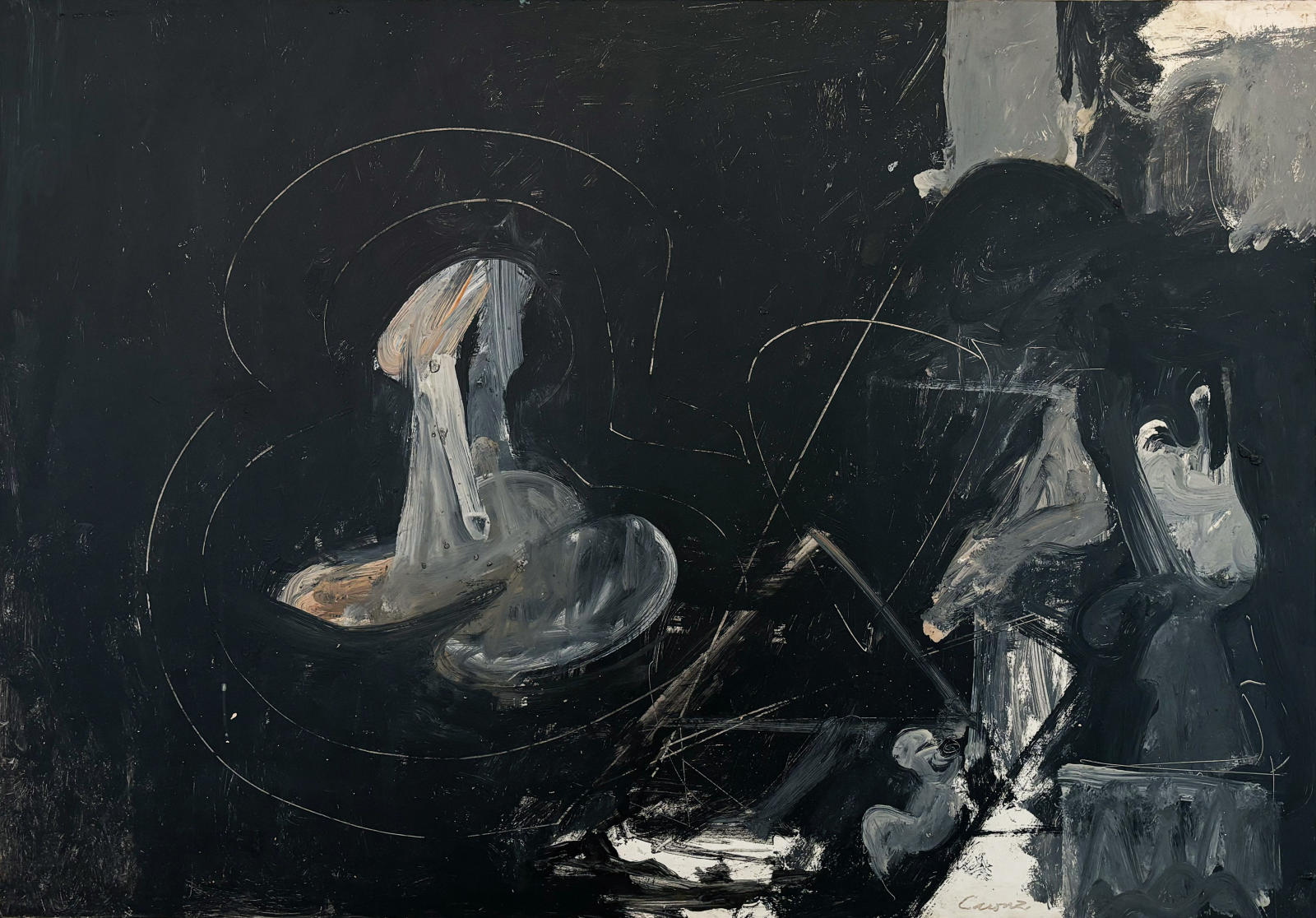






Framed: 33 1/2 x 43 1/2
artist
A member of the New York School of Abstract Expressionists, Carone was influenced by Surrealism, poetry, and Jungian psychology. Believing that every moment and experience contained inspiration, Carone once posited: "if you look at the sidewalks on a rainy day, study all the marks, you see great paintings."
Born on the Lower East Side and raised in Hoboken, Carone began his study of art at the Leonardo da Vinci School at St. Mark's Church at age eleven. He studied at the National Academy of Design under Leon Kroll-whom he would assist with the creation of the WPA Worcester War Memorial Mural from 1939-1941-then at the Art Students League of New York, Hans Hofmann School of Fine Arts, and the Rome Academy of Fine Arts. The '40s marked a period of success for the artist, who won the rome Prize in 1941 and a Fulbright Fellowship in 1949, both of which gave him the opportunity to study in Italy.
By this time the artist was a close friend of Jackson Pollock, and like the latter Carone opted to set up full-time residency in The Springs on Long Island. In the city, he showed at the Ninth Street Exhibition in 1951 and subsequently at the Stable Gallery. He was also represented by the Anita Shapolsky Gallery and Staempfli Gallery. He taught at Yale, Columbia, Brandeis, Cornell, the Cooper Union, the School of Visual Arts, and the Skowhegan School, later going on to help found the New York Studio School of Drawing, Painting, and Sculpture as well as the International School of Art in Montecastello, Italy.
A revived interest in Carone's work took place as a result of a 2005 show of his drawings at Lohin Geduld Gallery. He lived to the age of 93, dying in 2010. The artist is remembered for his talent for brushwork and fluency in the language of abstraction. His collage-like works juxtaposed jagged edges and viscous contours with fine lines, curvilinear contours, and lightweight patterning. Of the lyricism present in his abstractions, the artist stated in a 2006 interview:
"Don't be fooled by technique or paint quality… Fuck it! It's the imagery that goes on. It's metaphoric and it's poetry in a jazz sense. It's symbolic and it's on another dimension. It's not an order like Picasso but it's another dimension, the rhythm of mass."
—Nicolas Carone
Description
Gesture, 1957 is a classic black and white composition by Carone done during his best years. He was showing at the Staempfli Galleries, and he was full swing in the abstract – expressionist mode. This late 1950’s period was great for Carone as he was focused on a limited palette and working through a very painterly and intense period in his career. Here, he has chosen a fully black background and then to use grays to suggest his forms, which feel figural in nature. He often has a touch of a flesh tone color in the form on the left. He then uses perhaps the back of his brush or a tool to draw in the wet black paint and he both outlines his form and connects them. The tiny patches and glimpses of white suggest a white void behind instead of in front and allow the composition to breath. The composition allows for the viewer to perceive what they wish. We feel there is a narrative behind this work but what drives Carone is mysteriously veiled.
What is compelling in this work is the same surrealist edge that we get with an Arshile Gorky canvas when he did similar compositions.
provenance
Staempfli Gallery, New York
Private Collection, acquired from the above in 2004
Hindman, 2020
Private Collection, New Jersey
exhibitions
CAt. No. 10, Ex No. 62-37






